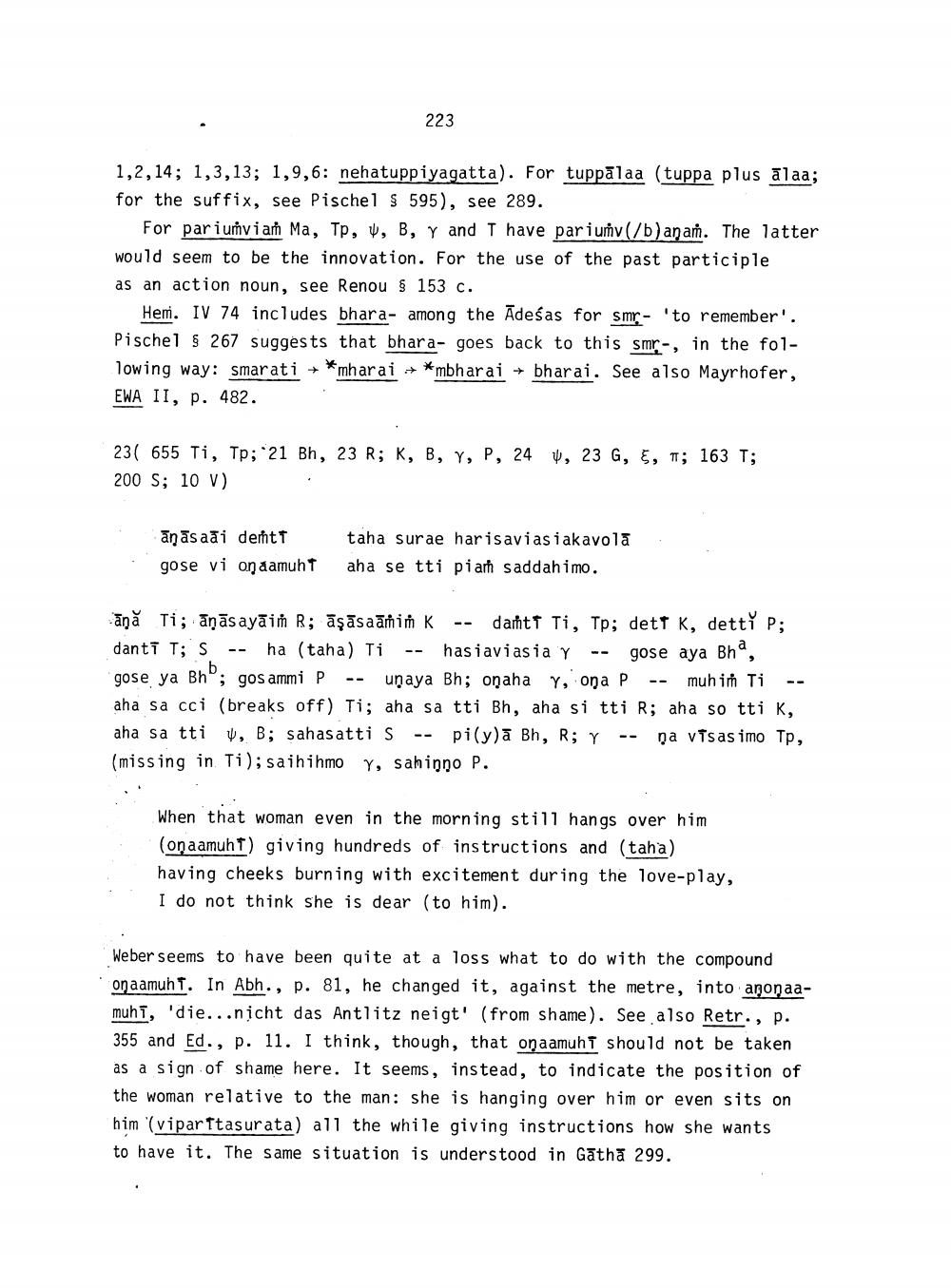________________
1,2,14; 1,3,13; 1,9,6: nehatuppiyagatta). For tuppalaa (tuppa plus laa; for the suffix, see Pischel $ 595), see 289.
For pariumviah Ma, Tp. v. B, y and T have pariunv(/b) anamh. The latter would seem to be the innovation. For the use of the past participle as an action noun, see Renou § 153 c.
Hem. IV 74 includes bhara- among the Adeśas for smr- 'to remember'. Pischel 267 suggests that bhara- goes back to this smr-, in the following way: smarati mharaimbharai bharai. See also Mayrhofer, EWA II, p. 482.
23 655 T1, Tp; 21 Bh, 23 R; K, B, Y, P, 24, 23 G, E, π; 163 T; 200 S; 10 V)
anasali deftT gose vi on aamuhT
223
taha surae haris aviasiakavola aha se tti piarh saddahimo.
F
ana Ti; pasaydim R; aşasaahim K daft Ti, Tp; dett K, detti P; danti T; S ha (taha) Ti hasiaviasia Y gose aya Bha b gose ya Bh; gos ammi P unaya Bh; onaha Y, ona P -- muhim Ti aha sa cci (breaks off) Ti; aha sa tti Bh, aha si tti R; aha so tti K, aha sa tti, B; sahasatti S pi(y) 8h, R; Y na visasimo Tp, (missing in Ti); saihihmo Y, sahippo P.
--
--
--
--
--
When that woman even in the morning still hangs over him (on aamuhT) giving hundreds of instructions and (taha) having cheeks burning with excitement during the love-play, I do not think she is dear (to him).
--
Weber seems to have been quite at a loss what to do with the compound on aamuhT. In Abh., p. 81, he changed it, against the metre, into anonaamuhT, 'die...nicht das Antlitz neigt' (from shame). See also Retr., p. 355 and Ed., p. 11. I think, though, that on aamuhT should not be taken as a sign of shame here. It seems, instead, to indicate the position of the woman relative to the man: she is hanging over him or even sits on him (viparttasurata) all the while giving instructions how she wants. to have it. The same situation is understood in Gatha 299.




